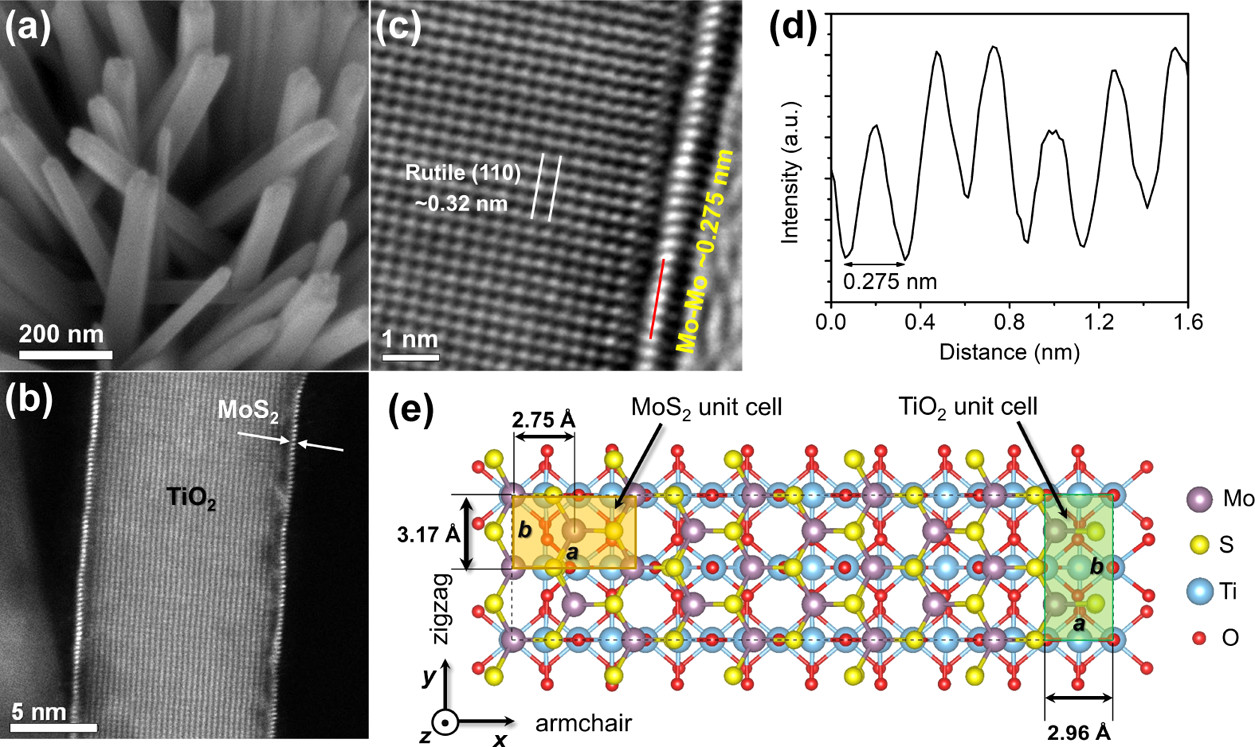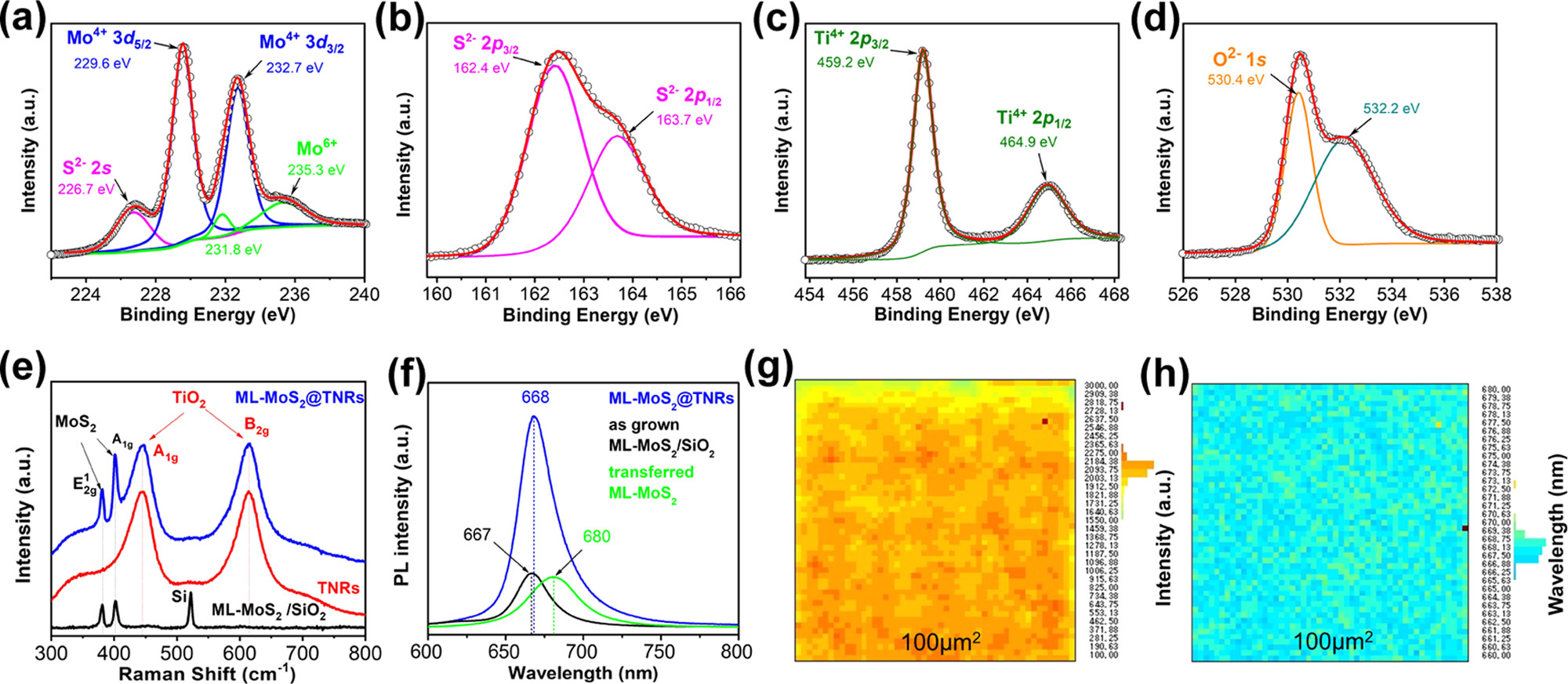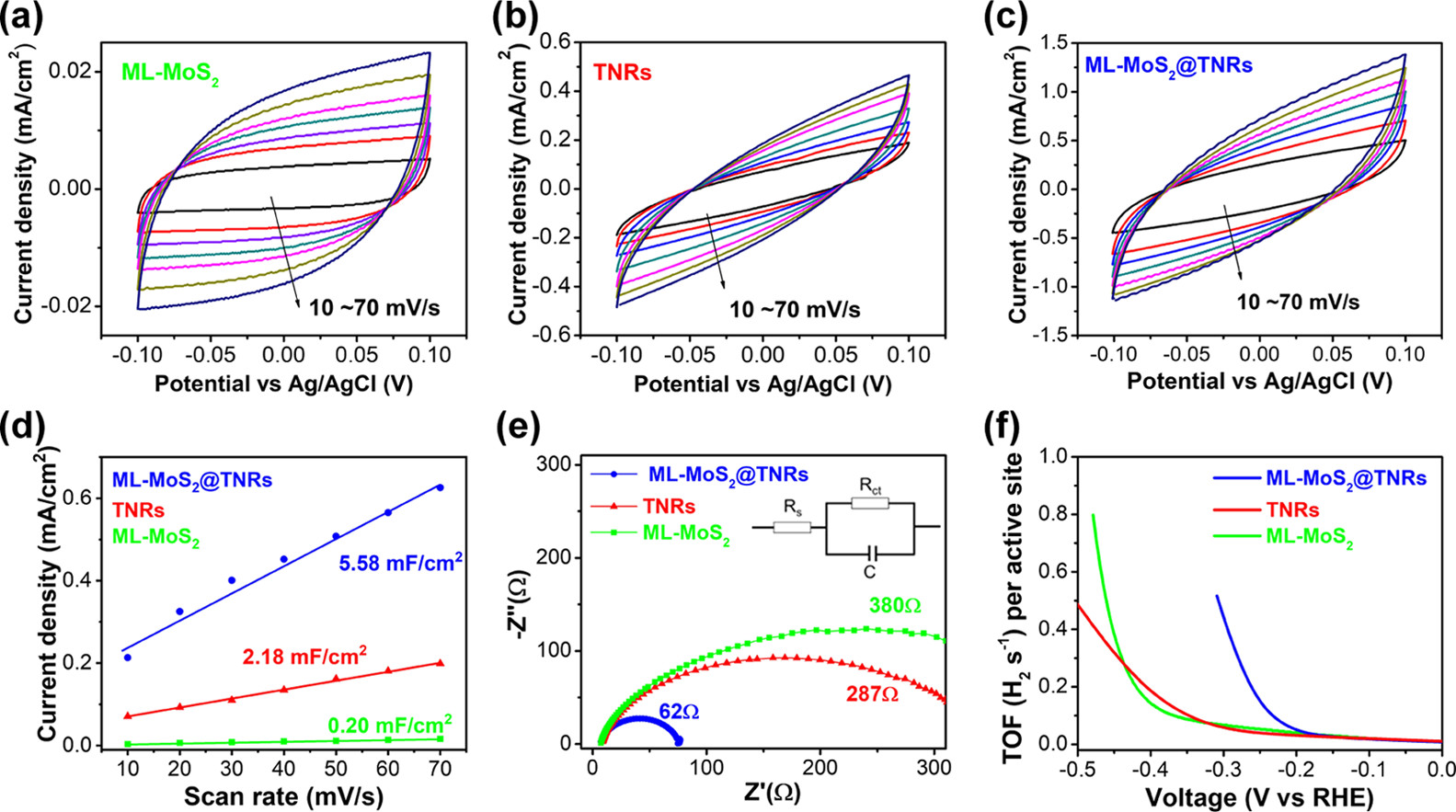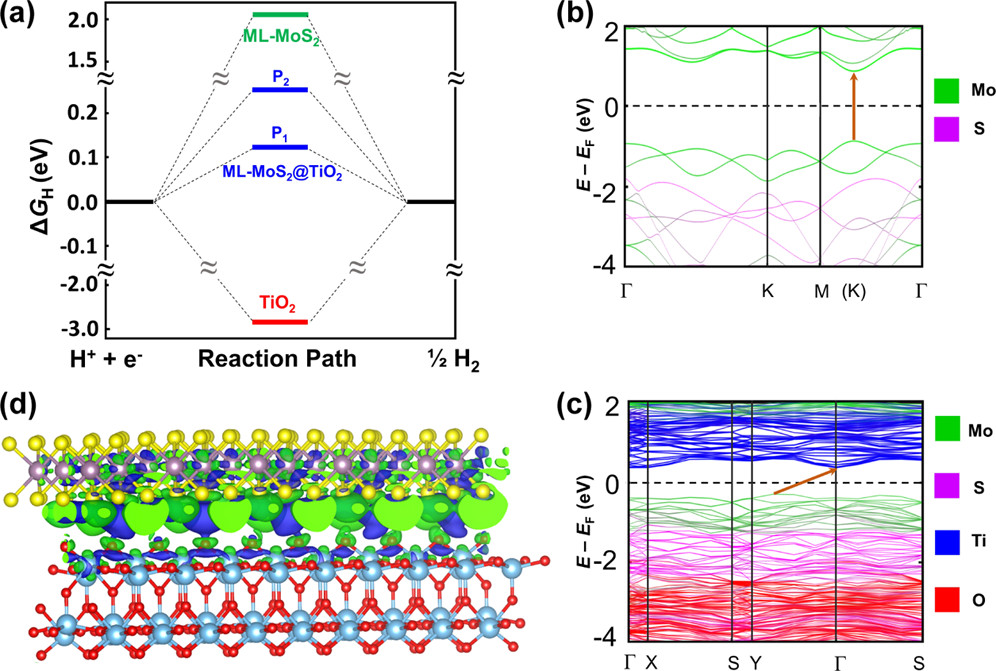Back To Listings
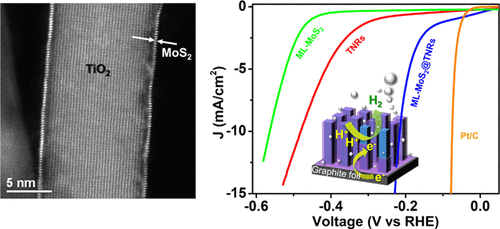




- First authors: Anh Duc Nguyen
- Corresponding authors: Joon Ik Jang, Yong Soo Kim, Young-Han Shin
- Whole authors: Anh Duc Nguyen, Thi Hue Pham, Tri Khoa Nguyen, Hamid Ullah, Zeeshan Tahir, Yun Chang Park, Jongwoo Park, Joon Ik Jang, Young Han Shin, Yong Soo Kim
- Authors from M3L: Hamid Ullah, Thi Hue Pham, Young-Han Shin
Heterostructures, particularly the shell−core (2D@1D) nanostructure with atomically thin layers of transition metal dichalcogenides, exhibit an excellent electrocatalytic hydrogen evolution reaction (HER)
activity. Herein, we introduce a facile and precisely controlled synthesis of a shell−core heterostructure that comprises TiO2 nanorods (TNRs) as a core array conformally covered by a continuous monolayer molybdenum disulfide (ML-MoS2) film as a shell. The TNR array was grown by a hydrothermal process, followed by the conformal coating of the ML-MoS2 film via metal−organic chemical vapor deposition. Interestingly, the shell−core hetero-structure (ML-MoS2@TNRs) shows a significant enhancement in the HER activity with an onset overpotential at 140 mV vs reversible hydrogen electrode and a Tafel slope of ∼80 mV/dec. Based on our experimental results together with first-principle calculations, we attribute the enhanced HER performance of ML-MoS2@TNRs to the synergetic effect of the following characteristics. (i) A large number of active sites owing to TNRs’ high surface to volume ratio. (ii) A considerable reduction in the charge transfer resistance caused by the direct growth of ML-MoS 2 over the TNR array, naturally rendering low electrical loss contacts compared to the conventional transfer process. Moreover, the direction of the built-in electric field in the MoS2/TiO2 heterostructure also facilitates the flow of electrons from the electrode to the electrocatalyst surface, consequently decreasing the charge transfer resistance. (iii) The high intrinsic HER activity of the active sites owing to the low Gibbs free energy of the catalytic surface (ML-MoS2@TNRs). Moreover, by virtue of the high crystalline quality of ML-MoS2, the ML-MoS2@TNRs sample shows excellent stability and working durability. Clearly, these characteristics suggest that our proposed method has great potential for practical applications in the form of large-scale HER devices.
Authors from M3L

Hamid Ullah
hamid.uou@gmail.com
Thi Hue Pham
phamhue@mail.ulsan.ac.kr

